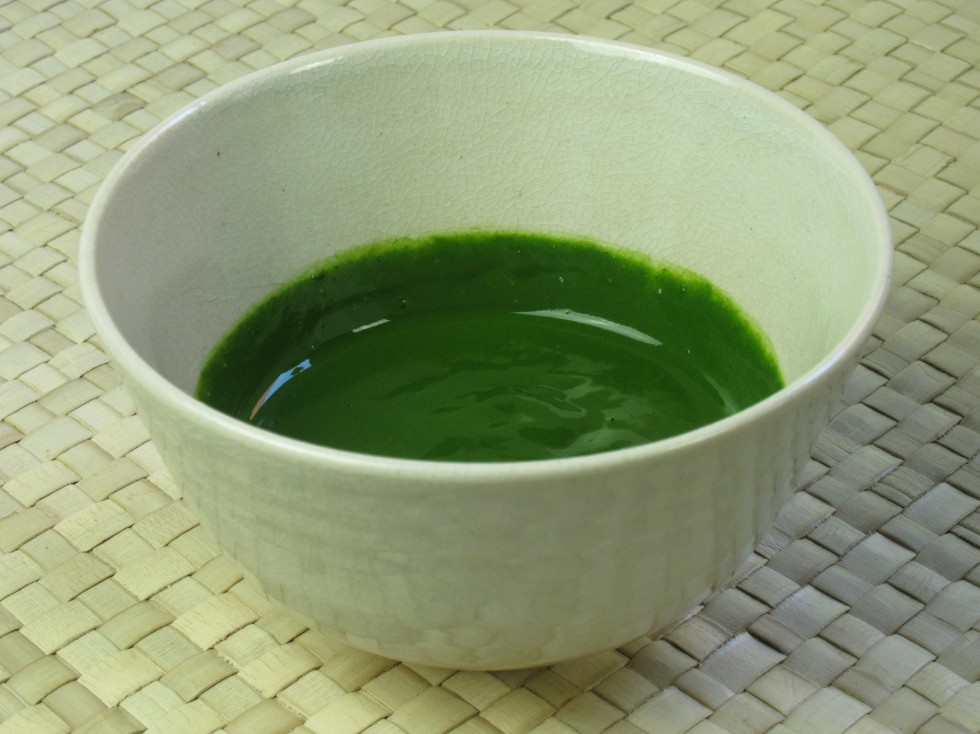Introduction
About Tea
History
Way of Tea
Iemotos
Tea Licenses
First Class
Virtual Scroll
Video Library

History of tea
Tea is believed to have first grown in the Yunnan province of China. The earliest surviving written record of tea was written over 2000 years ago near Seito, the capital of Shisensho province in China.
The first record of tea in Japan dates back to an early 9th century document stating Emperor Saga was served tea by a Buddhist priest named Eichu. Over time, the Japanese interest in Chinese activities, including drinking tea, declined.
Around the end of the 12th century, the zen monk Eisai brought Zen Buddhism to Japan, along with a new way of producing and drinking tea (matcha). Interest in tea drinking returned, but remained mainly as a Buddhist priest activity to aid in staying awake during meditation.
By the beginning of the 14th century, tea drinking had spread from the Buddhist temples to nobles and samurai visiting the temples. With the expansion of tea growing areas in Japan came Tōcha, a gambling game whereby the participants would guess the origin of various teas. Tea parties became lively and rowdy, combining feasting, gambling, and alcohol where the host could show off their Chinese acquisitions.
In the 15th century, two activities developed. One was the development of a chakai, or banquet. These banquets were more formalized into courses, making the overall event more refined and luxurious. At the same time, the steps of the tea ceremony were being codified.
Murata Shukō (1423-1502) became troubled by the conflict between the zen mind and the flashy tea ceremony. He set out most of his key theories on the tea ceremony in a letter to his student Furuichi Chōin of around 1488, a document now known as the Kokoro no fumi (Letter of the heart). His words on the topic began the idea of wabi-cha (simple tea). The letter discusses the importance of finding harmony between Chinese and Japanese utensils. The Chinese ceramics had regular forms with smooth "perfect" glazes. However, Murata had a fondness for the unglazed Japanese stoneware from Bizen and Shigaraki. He saw beauty in the imperfection of things.
Takeno Joo (1502-1555) was the heir of a wealthy leather merchant. He studied renga poetry as well as zen and tea. Although he was well off, he disliked the showy behavior normally associated with wealth. Takeno Joo preferred simple, understated ideas. He embraced Murata Shukō's ideas on simple tea and studied tea under two of Murata's students: Sogo and Sochin.
Sen no Rikyu (1522-1591) is important, not only in the practice of tea, but in Japanese history as well. Born in Sakai, he studied tea first under Kitamuki Dōchin. When Rikyu was 19, Dōchin introduced Rikyu to Takeno Joo, and Rikyu continued his studies with Joo. Rikyu made a name for himself as a tea practitioner, finally becoming tea master to powerful figures of the age, Oda Nobunaga and then Toyotomi Hideyoshi.
Rikyu's aim was to remove, as far as possible, the element of play and to achieve a tea ceremony centered on a spiritual exchange between people. He used his eye for beauty to create many utensils. Rikyu worked with various craftsmen, including Chojiro (raku tea bowls), to develop a wabi (quiet simplicity) aesthetic, as opposed to the imported and expensive Chinese items which were popular at the time. Rikyu's sado has continued to this day, passed down through the 'Sansenke' (three Sen family branches), Omotesenke, Urasenke and Mushanokojisenke.